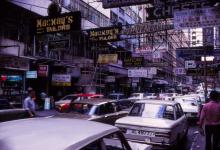Notes on Rob’s Military sites and list of terms used
Primary tabs
Background to this research.
These lists are my own compilation, based on studies over 20 years. They may disagree with other sources, as documents on the same subject from different offices sometimes contradict each other.
References given in the timelines are from the National Archives at Kew, London, unless otherwise marked. Names of batteries are those used at the time and names of localities, in particular, may vary from those now in use. Current names are shown in brackets.
Records are not complete, as over the time span of this listing some batteries have very complete records, whilst others almost none. The reasons are various – lost, destroyed, misplaced being some. The format of the Armament Tables, which form a large part of the records, kept changing over the years so that continuity of information fails. Large files may hold documents covering a period of many years, hence the same Reference may appear with different dates.
For some sites, records are not clear so I’ve had to make educated guesses. If you spot any mistakes, or can add detail to any of the pages, please leave a comment to let me know. Any photographs of the sites described will also be gratefully received.
Rob Weir.
A brief history of batteries in Hong Kong
In the early 1840/1850 period, the Royal Navy was the primary force for the defence of Hong Kong, and particularly the harbour. This eventually devolved to the Royal Artillery and land based batteries. The short range of most guns of the time required there be many batteries to cover the whole area. Advancing technology allowed the numbers to be reduced as more effective guns were developed. By the early 1900’s these had been standardised in Hong Kong as the 9.2” BL Mk X gun for long range counter bombardment involving major armoured ships, and the 6” BL Mk VII for close defence. In time of necessity during the 1930’s some older weapons, which had been kept in reserve, were deployed in emergency batteries.
The Washington Treaty co-signed by Britain in 1922 permitted only modernisation of coastal defences, but not increasing the number or calibre of guns. Consequently there were no new batteries built in Hong Kong between 1922 and 1934. At the time of the war in 1941, Hong Kong had only four modern batteries, Stanley, Collinson, Jubilee and Chung Hom Kok.
In February 1956 the British Government announced Coastal Artillery was to be abolished, and it ceased to exist at the end of that year. In Hong Kong all guns were removed, and most batteries given secondary uses, or abandoned and eventually sold off. Outside the Museum of Coastal Defence, any batteries remaining only do so by virtue of their solid construction, with no attempt at preservation.
Glossary
- AA: Anti-aircraft.
- A.O.D: Army Ordnance Depot.
- Approved: Part of the current, or future, Defence Plan.
- Barbette Mounting: Gun pit from where the gun can be fired over its protective surroundings (parapet).
- BL: Breech Loading.
- Casemate: Enclosed concrete structure from which guns could fire through embrasures.
- cwt: 112 lbs weight Imperial Measurement.
- Destroyed on (date): Rendered unusable (by some method) by the battery personnel.
- EOC: Elswick Ordnance Company mounting.
- Gardner M/G: Early mechanical machine gun.
- HAA: Heavy Anti-aircraft. (Gun of 3.7” calibre and above considered Heavy AA.)
- HQBF: Headquarters British Forces Hong Kong.
- HP Mounting: Hydro Pneumatic Disappearing Carriage.
- Maxim-Nordenfelt M/G: Multi-barrelled mechanical machine gun.
- Mounted: Gun in place.
- Not Listed: No longer included in Defence Plan.
- QF: Quick Firing - projectile and propellant contained in one case, as opposed to using separate projectile and propellant cartridge. Allowed increased rate of fire.
- RCD: Royal Carriage Department mounting.
- Reduced: No longer forms part of the current, or future, Defence Plan.
- RML: Rifled Muzzle Loading.
- Siege Carriage: Wheeled mounting that could be secured to a fixed base.
- Sliding Carriage: A mounting where the gun recoil from firing is dissipated through friction by the gun sliding up an inclined base.
- 64 pdr: RML gun firing a shell weighing approximately 64 pounds.
- 32 pdr: Muzzle loading Naval gun firing a shot weighing approximately 32 pounds.
- 24 pdr: Muzzle loading Naval gun firing a shot weighing approximately 24 pounds.
- 12 pdr: Quick firing gun firing a shell weighing approximately 12 pounds.
- 6 pdr: An early QF gun firing a shell weighing approximately 6 pounds.

